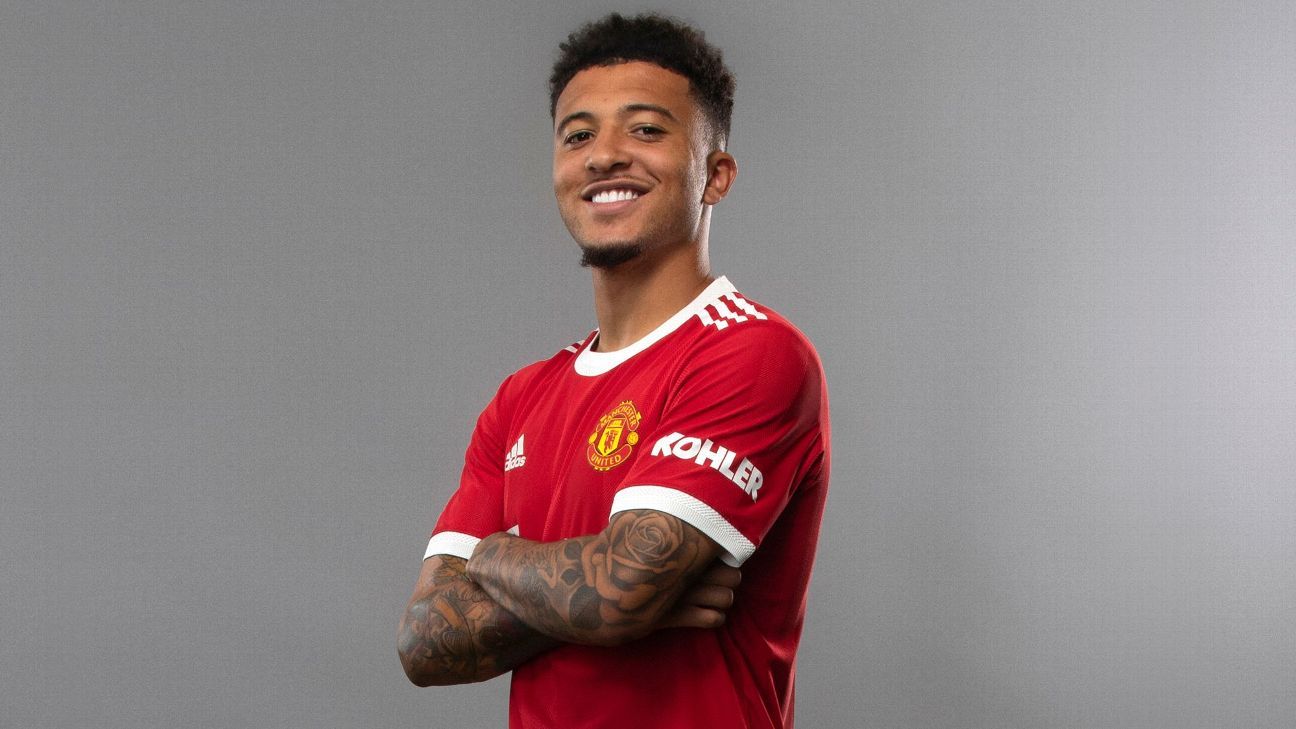When it comes to the transfer market, Premier League clubs have all embraced the analytics approach over recent years to find new talent, while scouting habits and finances have been impacted by the COVID-19 pandemic.
But clubs still differ in the various strategies that can be used to find success. Here’s how four teams have managed to make their way in the market and what others could learn from their efforts.

LIVERPOOL: Using data to assess the right players
It was arguably the transfer strategy at Anfield — spurred on by owners Fenway Sports Group who have a background in American sports with MLB’s Boston Red Sox — that was first in the Premier League to be branded with the term “Moneyball.”
Liverpool‘s recruitment team, the majority of whom had previously worked for Tottenham Hotspur and Manchester City, went through a real purple patch after Jurgen Klopp’s arrival in 2015, helped largely by a data-driven approach.
From previously spending big sums on flops like Lazar Markovic, Christian Benteke and Andy Carroll, the club made headlines by opting to splash out even more on world-class stars like Virgil van Dijk (£75 million), Alisson (£56m), Mohamed Salah (£36.9m) and Sadio Mane (£34m) because those decisions were backed up by better evidence. Klopp made his specific demands over the type of player he wanted, left the search to his staff, and it paid off with a first Premier League title since 1990 and a first Champions League trophy since 2005.
These days, while the process-driven, methodical approach to the transfer market remains, the appetite to spend world-record sums in certain positions seems to have worn thin — likely a result of the financial restraint caused by the COVID-19 pandemic but also from knowing that a lot of the work to build a world-class team has already been done.
When they are not battling an injury crisis, Liverpool have proved to be one of the most forward-thinking operators in the market, as savvy moves for Fabinho (£40m), Diogo Jota (£35m), Thiago (£20m) and Andy Robertson (£7m) have shown.
There is still plenty to learn, however. After a chaotic centre-back search amid their injury woes last campaign saw them panic to land Schalke’s Ozan Kabak on loan and Preston’s Ben Davies for £1.5m just to fill the gaps, Liverpool were more considered in their move to land one of Europe’s top young defenders in RB Leipzig‘s Ibrahima Konate for £35m this summer. That’s the kind of deal that could set them up for years to come.
1:34
Gab Marcotti and Julien Laurens discuss just how long Leicester can keep challenging at the top of the Premier League.

LEICESTER: Target specific markets and move quickly
Leicester raised the bar when the recruitment team led by Steve Walsh picked up players like Riyad Mahrez (£500k), Robert Huth (£4m) and N’Golo Kante (£7m), alongside the free transfers of Marc Albrighton and Christian Fuchs, to lay the foundations for their incredible 2016 Premier League title triumph. Even star striker Jamie Vardy was plucked from obscurity at non-league Fleetwood Town for £1m in 2012 and turned into a superstar.
Being early adopters of applying numbers-based analytics to flag up potential recruits, Walsh’s team performed brilliantly in finding value in areas otherwise overlooked. Nowadays, however, with the same tools pretty much available to everyone, such spectacular finds are few and far between, while Walsh left in 2016 — he was briefly sporting director at Everton before becoming special advisor for next season’s MLS debutants Charlotte FC.
Yet Leicester keep impressing. While they have raised funds by letting some star players go — Harry Maguire (£80m), Mahrez (£60m), Ben Chilwell (£50m), Danny Drinkwater (£35m), Kante (£32m) — they took the smart decision to target a few specific markets for their replacements and become experts on those instead of casting a wider net across the whole of Europe. Their focus on France and Belgium in particular is paying dividends.
– Stream ESPN FC Daily on ESPN+ (U.S. only)
– Don’t have ESPN? Get instant access
Last autumn, they spent £31.5m to sign 20-year-old Wesley Fofana from Saint-Etienne and he ended the season as one of the most impressive Premier League centre-backs. Getting ahead of the competition for players like Fofana — in contrast, Arsenal spent £27m to land his Saint-Etienne defensive partner William Saliba who has not been a success — has been key, and the list of top quality additions in recent seasons includes Youri Tielemans (£40m), James Maddison (£22.5m) Caglar Soyuncu (£19m) and Wilfred Ndidi (£15m).
Time will surely tell, but this summer’s captures of FC Salzburg striker Patson Daka (£27m) and Lille midfielder Boubakary Soumare (£18m) appear similarly promising.
But while Leicester’s scouting work deserves recognition, crucially they’ve got their logistics spot on too. As one head scout of a European based top club tells ESPN: “Leicester get a lot of praise for their work in the market and it’s deserved. In my opinion, it’s the response time that makes them stand out. They identify what they want and go for it. Everybody knew about Tielemans, but while everybody hesitated, Leicester made a move. The same thing for Daka and Soumare — absolutely everyone who works in top level scouting knows them inside out, but again; Leicester went in and got them. To me this shows that the club is well co-ordinated. Everybody works according to the same principles and the owner or the CEO are on the ball too. This is a great strength. At many other clubs, discussions take too much time.”
1:12
Mark Ogden explains what it will take for Manchester City to acquire Harry Kane from Tottenham this summer.

MAN CITY: The holistic approach, backed by big investment
After spending over £1 billion in the transfer market over the last six years alone, the reigning Premier League champions find themselves in a comfortable situation. Manager Pep Guardiola already has two quality options for every first-team position and, thanks to investment and impressive work at academy level, homegrown talents like Phil Foden are starting to emerge.
Nearly a decade after the club were ridiculed for wanting to implement a “holistic approach” to the way it runs after the sacking of Roberto Mancini in 2013, they are pretty much there now. The benefits of the structure and principles laid out by sporting director Txiki Begiristain and Guardiola trickle down to the youth teams, as well as the women’s side and recruitment team. City now operate with clear guidelines over what style of players may be of interest to the club.
Furthermore, Manchester City is now the pinnacle of City Football Group, an Abu Dhabi-backed entity which comprises 10 clubs from all corners of the globe — Girona (Spain), New York City FC (United States), Troyes (France), Lommel SK (Belgium), Melbourne City (Australia), Mumbai City (India), Sichuan Jiuniu (China), Montevideo City Torque (Uruguay), Yokohama F. Marinos (Japan) — all run on a similar philosophy and principles, and their stable of clubs includes reigning champions in three countries.
By funnelling tomorrow’s top players into the feeder clubs, City’s recruitment team theoretically set them on a path that will ideally lead to the east side of Manchester, though it remains to be seen if the likes Daniel Arzani, Kluiverth Aguilar, Diego Rosa, Pablo Moreno, Yan Couto and Nahuel Bustos ever have futures at the Etihad.
City’s recent focus on South America has brought them exceptional young talent like Kayky (£8m), Dario Sarmiento (£3m) and Aguilar (£1m), who may all go on loan before getting a chance at the first team. But the club are clearly keen to bring in young, ambitious players with the technical profile that corresponds with their clearly defined playing style.
Last year’s signing of Benfica defender Ruben Dias (£61m) and Valencia winger Ferran Torres (£20m) are good examples of this thinking, albeit at a higher price and ready to slot straight in, while substantial funds are still being made available for world-class candidates when needed. It will be interesting to see how City balance their “holistic approach” to young players against spending £100m-plus on Tottenham strike Harry Kane or Aston Villa midfielder Jack Grealish, perhaps even both.
While they continue to be backed by money from Abu Dhabi, City will always be able to compete for the world’s best players. Though they will be focused more on bringing through the next Foden.
1:17
Stewart Robson explains where he thinks Man United need to improve if they are to challenge for the title.

MAN UNITED: Spending big on big names
United are the blueprint for bringing players through the academy and memories of the successful “Class of 92” era still send shivers down many opponents’ spines. But, alongside rivals City, United have been the top spenders in recent years with an average of £131m per year over the past seven seasons. That spending has brought them stars like Paul Pogba (£89.3m), Maguire (£80m), Bruno Fernandes (£56m), Fred (£53m), Aaron Wan-Bissaka (£50m) and has been focused on slowly building a squad of world-class players.
This summer’s £73.9m capture of winger Jadon Sancho from Borussia Dortmund corresponds well with manager Ole Gunnar Solskjaer’s desire to work with dynamic young English players, while the £34m capture of Real Madrid defender Raphael Varane adds a world-class centre-back in his prime.
There is certainly a view towards the future — as the signings of winger Amad Diallo (£21m) and Facundo Pellistri (£7m) attest — but United’s chaotic rebuild since Sir Alex Ferguson retired in 2013 has been a mix of big spending (sometimes misplaced, such as with Donny van de Beek or Romelu Lukaku) and adding experience in the form of players like Bastian Schweinsteiger, Zlatan Ibrahimovic and Edinson Cavani.
As a commercial global powerhouse, United’s finances haven’t been hit as hard by the COVID-19 pandemic as many of their rivals, while they have made significant investment to their scouting department over recent years and restructured the organisation to make room for Football Director John Murtough — with the result possibly being the emergence, finally, of a clearly defined overall recruitment strategy.
United’s decades of focus on the academy has brought the likes of Brandon Williams, Scott McTominay, Mason Greenwood and Marcus Rashford to the first-team, but that success has always been supplemented by big spending in key positions every season. The communication over where to strengthen is key and, after some transfer mis-steps under Mourinho and Louis van Gaal, Solskjaer’s excellent summer moves mean he has arguably got the squad to beat next season.
